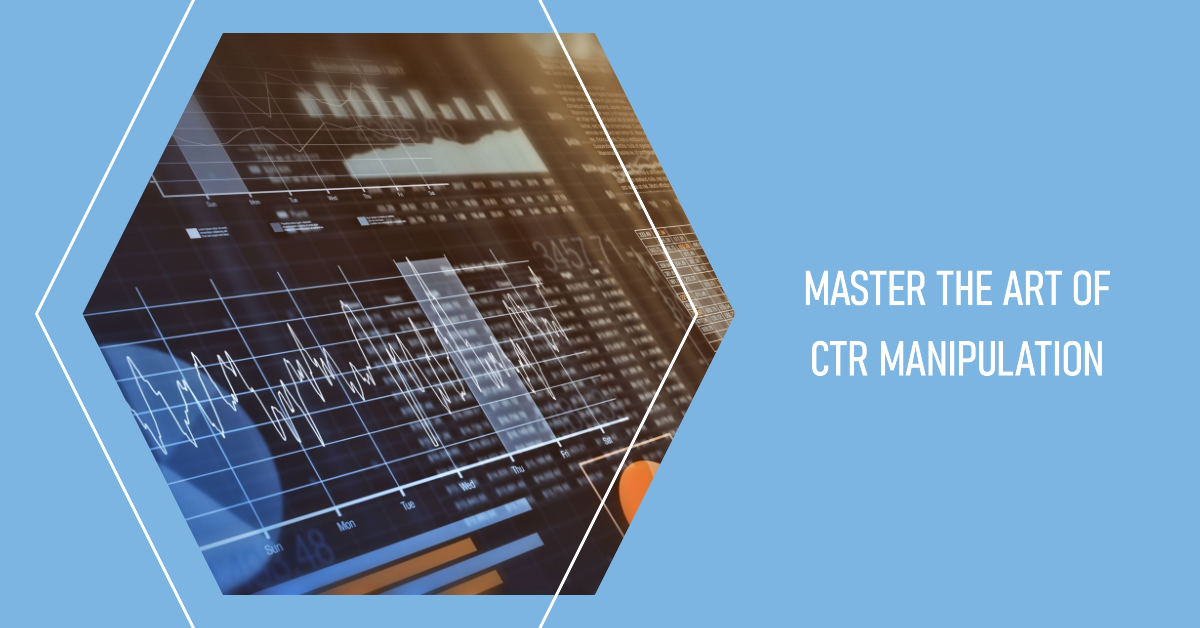LinkDaddy CTR Manipulation-- Proven Methods for Better Online Engagement
CTR Manipulation: A Video Game Changer for Digital Projects
The increase of CTR control has undoubtedly changed digital marketing techniques, supplying online marketers with devices to boost engagement and drive web traffic properly. What effects might this stabilizing act hold for the future of electronic campaigns?
Comprehending CTR Control
Although click-through price (CTR) manipulation might look like an uncomplicated tactic in digital marketing, it includes a variety of strategies focused on artificially pumping up interaction metrics. This adjustment can take various types, including making use of click farms, bots, or deceitful advertisement placements that deceive customers right into clicking. These techniques can endanger the honesty of efficiency data, making it testing for online marketers to determine the genuine effectiveness of their campaigns.
Additionally, CTR manipulation raises moral problems, as it undermines the transparency of digital marketing. The dependence on inflated metrics can result in misdirected advertising and marketing choices, skewing source appropriation and campaign techniques. Consequently, organizations may invest heavily in channels and strategies that appear effective however do not generate genuine involvement or conversions.

Advantages of Click-Through Price Optimization
Optimizing click-through rate (CTR) is crucial for boosting the efficiency of electronic marketing projects. A greater CTR indicates that a bigger percentage of customers are involving with the material, which can result in enhanced site traffic and far better conversion prices. By boosting CTR, brand names can effectively assign their advertising and marketing sources to initiatives that generate the highest returns.
One of the main benefits of CTR optimization is the potential for enhanced ad placement and reduced expenses - CTR Manipulation. Systems like Google Ads award greater CTRs with far better ad positioning and decreased cost-per-click (CPC), enabling marketing experts to extend their spending plans further. Furthermore, a well-optimized CTR can boost brand visibility, as greater engagement prices typically associate with enhanced natural reach

Strategies for Efficient CTR Manipulation
To properly control click-through prices (CTR), marketers can employ a selection of critical techniques that boost customer involvement and drive web traffic. One fundamental method is enhancing ad duplicate to create engaging and action-oriented language. CTR Manipulation. Utilizing strong call-to-action (CTA) expressions urges users to take prompt activity, boosting the probability of clicks
One more efficient method is A/B testing, which allows marketers to contrast different ad variations. By methodically examining performance metrics, they can identify which components resonate best with the target audience, consequently improving their techniques for optimal impact. In addition, leveraging aesthetically enticing graphics and concise messaging can catch focus swiftly, making it a lot more possible that individuals will involve.

Finally, enhancing touchdown web pages to guarantee a smooth user experience can reduce bounce rates and encourage further interaction, eventually fostering higher CTR. By integrating these techniques, marketing professionals can effectively manipulate CTR to accomplish their campaign purposes.
Determining Success in Digital Projects
Determining success in electronic projects requires a clear understanding of essential performance indications (KPIs) that straighten with campaign objectives. KPIs function as measurable metrics that help analyze the effectiveness of various approaches utilized throughout the campaign. Typical KPIs consist of click-through prices (CTR), conversion rates, cost per procurement (CERTIFIED PUBLIC ACCOUNTANT), and return on investment (ROI)
To effectively gauge success, it is important to develop particular, quantifiable objectives initially of other the project. As an example, if the primary goal is to boost brand recognition, metrics such as impressions and engagement prices may be focused on. On the other hand, campaigns concentrated on direct sales would profit from this hyperlink a more in-depth evaluation of conversion rates and income created.
Regular analysis of these KPIs makes it possible for marketers to make data-driven choices, maximizing their methods in real-time. Using logical tools can aid in monitoring efficiency and recognizing trends, permitting speedy adjustments to enhance project results. Eventually, a comprehensive method to determining success not just highlights locations for improvement but likewise reinforces the overall performance of electronic advertising and marketing initiatives, driving continual growth and interaction in the long term.
Future Patterns in Digital Advertising And Marketing
Preparing for the future of electronic advertising and marketing discloses a landscape formed by rapid technological developments and altering customer actions. As synthetic you can try these out intelligence and artificial intelligence remain to advance, marketers will increasingly utilize these modern technologies to customize campaigns at an unprecedented scale. Anticipating analytics will certainly make it possible for brand names to prepare for client requirements, enhancing ad placements and content distribution in actual time.
Additionally, the increase of voice search and wise devices is transforming just how customers engage with digital content. Marketers will certainly require to adapt their strategies to ensure presence throughout multiple systems, consisting of voice-activated assistants. This shift demands an emphasis on conversational advertising, emphasizing involvement with dialogue as opposed to standard marketing tactics.
In addition, privacy concerns are motivating modifications in data collection techniques. Transparency and moral data usage will certainly come to be extremely important, driving brands to foster count on and loyalty among customers. The continuous development of social media systems will additionally affect advertising strategies, with an increased emphasis on authenticity and user-generated content.
Final Thought
In recap, CTR manipulation represents a substantial advancement in digital advertising and marketing approaches, offering immediate benefits with boosted involvement metrics. However, the honest factors to consider bordering such methods demand a mindful strategy to make certain long-term brand integrity and genuine audience connection. By striking a balance between optimization techniques and genuine involvement, marketing experts can grow sustainable partnerships with consumers. The ongoing evolution of electronic advertising and marketing will certainly rely on this fragile interplay, forming the future landscape of brand-consumer communications.